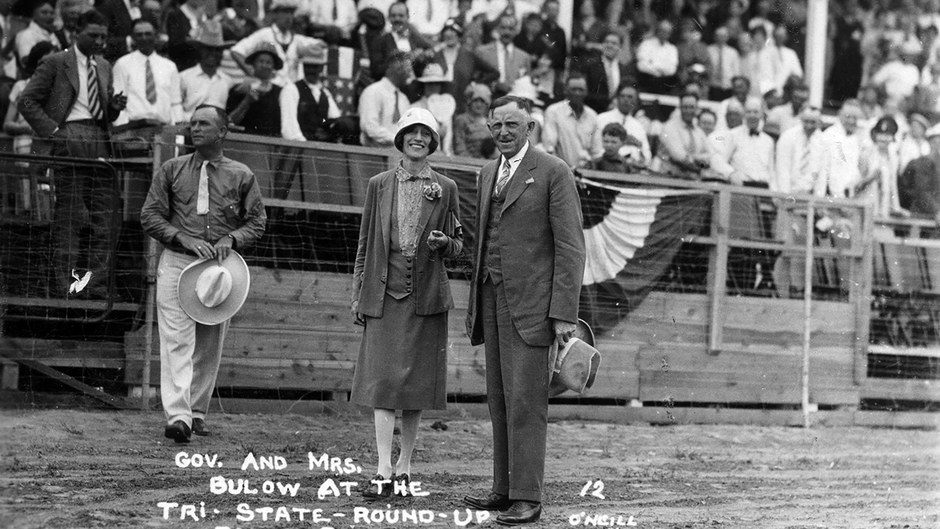The latest issue of South Dakota History, the quarterly journal of the South Dakota State Historical Society, features selections from the unpublished autobiography of William J. Bulow, Sr., a two-term governor and U.S. Senator for South Dakota. Bulow, who lived and served in South Dakota in the late nineteenth and early twentieth centuries, provides numerous insights into the state’s early culture and politics throughout the narrative. We asked Tonnis H. Venhuizen, who edited and annotated the autobiography for the journal, what brought him to Bulow’s life story.
For the past several years, I have been on the board of the Trail of Governors Foundation, which supports the erection of statues honoring the governors throughout Pierre. One of the fun parts of that role is reaching out to the family members of former governors to inform them about the project and ask for their help. That work is how I first made contact with Barbara Bulow Dwyer. Dwyer is the granddaughter of William J. Bulow, who was the first Democrat to hold the office of governor from 1927 to 1931 and then served as an U.S. Senator from 1931 to 1943. We plan to unveil a statue of Bulow on the Trail of Governors in June 2022.
 During our conversation, Dwyer mentioned her grandfather’s autobiography. I had done a fair amount of research into the former governors but had never heard of this manuscript. She explained that, after being defeated for his seat in the Senate, Bulow purchased a typewriter and typed out his own life story over the next few years. Dwyer said she believed she possessed the only copy of Bulow’s manuscript. I asked for her to make a copy and send it to me, but, to my horror, she instead mailed me the original. I quickly arranged to have the manuscript scanned and returned to her, not wanting to be responsible for the only copy.
During our conversation, Dwyer mentioned her grandfather’s autobiography. I had done a fair amount of research into the former governors but had never heard of this manuscript. She explained that, after being defeated for his seat in the Senate, Bulow purchased a typewriter and typed out his own life story over the next few years. Dwyer said she believed she possessed the only copy of Bulow’s manuscript. I asked for her to make a copy and send it to me, but, to my horror, she instead mailed me the original. I quickly arranged to have the manuscript scanned and returned to her, not wanting to be responsible for the only copy.
Anyone reading Bulow’s autobiography would see that he was remarkably funny. During his life, he was often compared to humorist Will Rogers. His education, though, had been only intermittent and he grew up speaking German. This fact meant that, although he was a gifted storyteller, his spelling and punctuation were unorthodox to say the least.
After scanning the manuscript, I set to work editing the entire manuscript, preserving Bulow’s words while correcting spelling and punctuation and breaking up long paragraphs and sentences. The entire autobiography is about 165,000 words and includes Bulow’s early life in Ohio, his first years in South Dakota as a young attorney, and his years in Beresford practicing law and dealing in farmland. He also talks about his unlikely political career; his dealings with figures such as Calvin Coolidge, “Poker Alice” Ivers, and Gutzon Borglum; and his intense dislike for President Franklin D. Roosevelt, a fellow Democrat.
At the invitation of former Director of Research and Publishing, Nancy Tystad Koupal, I selected excerpts totaling about twenty thousand words for South Dakota History. I hope fellow history enthusiasts will enjoy the new window into South Dakota’s early years that Bulow’s words provide.
Tonnis H. Venhuizen
To learn more about Bulow’s life and times, check out the latest edition of South Dakota History. The journal is a benefit of membership to the South Dakota State Historical Society and individual issues are available for order at sdhspress.com/journal.
Caption: In the photograph above, Bulow and his wife, Sarah, attend the Black Hills Roundup in Belle Fourche while he served as governor.

